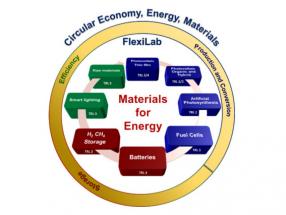
The COP21 Paris agreement provides for 100 million electric vehicles to circulate in 2030 (electric vehicles, EVs, plug-in hybrid electric vehicles, PHEVs, fuel cell electric vehicles, FC). Proton conduction polymeric fuel cells (PEMFCs) or anionic (AEMFCs) operating at temperatures between 50 ° C and 150 ° C are undoubtedly of great interest for possible applications in the transport sector. These devices have been studied by the FLEXILAB Project, Project "Departments of Excellence" 2018-2022, focusing on the development of new materials for the production of more efficient, more sustainable and less expensive fuel cells.
We interviewed Prof. Piercarlo Mustarelli, Professor of Physical Chemistry of the Department of Materials Science and work package leader of this research activity, to understand why this type of device is so important and what were the results achieved during the project.
What are the advantages of using fuel cells?
Fuel cells make it possible to reduce greenhouse gas emissions faster than any other technology. At the same time, however, it is a very demanding market that requires significant technological developments, eg. regarding operating temperature, quick start-up and the ability to follow rapid load changes. The development of new generation polymeric fuel cells requires the development of new electrolytic membranes capable of operating at temperatures of the order of 120-150 ° C in conditions of low humidity, and the availability of new nanostructured electrocatalysts (EC) capable of running without or with less platinum. Alternatively, it is possible to switch from proton conduction membranes (current market standard) to anion conduction membranes, which may allow the use of noble metal-free catalysts.
What objectives has the FLEXILAB project set itself in this area, and what actions have been taken?
The research focuses on the synthesis and functionalization of polymers and catalysts optimized for the construction of new types of high performance and low environmental impact fuel cells. The materials have been assembled in prototypes used for their functional characterization, also with regard to stability over time.
What were the results achieved?
We have obtained new membranes, especially anionic conducting, capable of offering high performance even at temperatures below 100 ° C. The membranes were developed using green chemistry processes, with a view to environmental sustainability. As regards the catalysts, processes have been developed to obtain, starting from biomass waste or municipal waste, carbon-based nanostructured materials that appear very promising for use in the fuel cell.